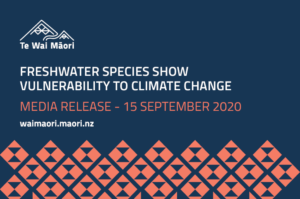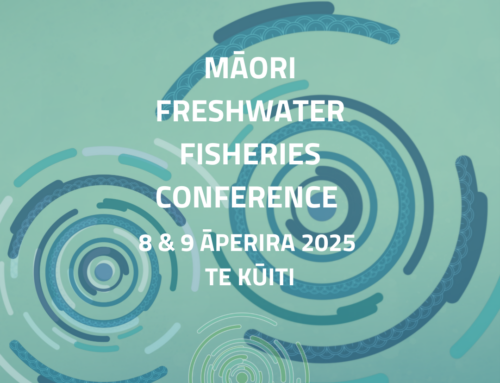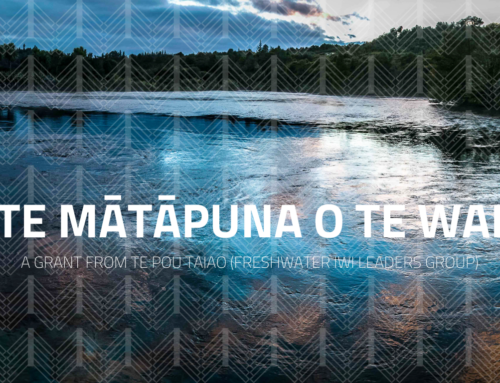Media Release: Freshwater species show vulnerability to climate change
15 September 2020

A new study has identified seven freshwater species native to Aotearoa-New Zealand that will likely be highly or very highly vulnerable to climate change.
The research, carried out by Te Wai Māori Trust and NIWA, assesses the vulnerability of 10 taonga (treasured) freshwater species to climate change according to an internationally recognised method known as a Climate Change Vulnerability Assessment.
Trust chair Lisa te Heuheu, says they have heard from iwi and hapū throughout the mōtu that climate change is one of the biggest and most uncertain challenges that future generations will experience.
“Their relationship with taonga species, their practices of mahinga kai, and their mātauranga Māori are all changing.”
Officially launched last week, this is the first time an assessment of this kind has been carried out for freshwater species in Aotearoa-New Zealand. It works by designating a vulnerability ranking by combining two criteria:
- The exposure of a species to projected changes in climate – such as changes in temperatures and rainfall, and
- The ability of that species to cope with those potential changes based on their unique characteristics.
The assessment allocates each species one of four climate change vulnerability rankings: low, moderate, high and very high.
In this assessment, tuna (longfin eel) and piharau/kanakana (lamprey) were ranked as having very high vulnerability to climate change, meaning they potentially are the most at-risk species of the 10 included in this approach.
Longfin eels, already classified as “at-risk declining” by the New Zealand Threat Classification System, face pressures from on-going habitat loss, commercial fishing, migration barriers and mortality at hydro-structures. Climate change could potentially compound the impacts already being experienced by all of our freshwater taonga species, however, very little research has focused on this area to date.
In the assessment’s high vulnerability category are īnanga/inaka, tuna (shortfin eel), kākahi/kāeo (freshwater mussels) banded kōkopu and kōaro.
In addition, kōura/kēwai (freshwater crayfish) and giant kōkopu are ranked as moderately vulnerable and only aua/kātaha (yellow-eye mullet) are ranked at low vulnerability to climate change.
NIWA Chief Scientist Dr Erica Williams says this is the first step towards increasing our awareness of emerging climate change related threats to our freshwater taonga species.
“This approach provides us with insights into how some of our freshwater taonga species’ exposure to climate change may vary nationally, and how each species may respond differently depending on where they are located and their unique life cycle requirements.”
“It also highlighted that there are still some major gaps in our knowledge of these species, and their interactions with the ecosystems they are dependent on to survive and thrive.”
Meanwhile, Lisa te Heuheu is calling for local and central government investment in climate change mitigation for freshwater ecosystems.
“We are seeing the effects of climate change on our freshwater species right now, and no-one has a plan to address it. Most of our existing legislation is not fit for purpose to provide for the aspirations of tangata whenua for their freshwater species,” she says.
To read the report see: https://waimaori.maori.nz/vulnerability-assessment-reports-for-freshwater-taonga-species-to-climate-change/
For more information contact:
Te Wai Māori Trust:
Bede Dwyer
(Kūrae Kōrero) Communications Manager
Phone: 0210739684
Email: bede.dwyer@waimaori.maori.nz
NIWA:
Susan Pepperell
NIWA Senior Media Advisor
Ph 04 386 0473
Mob 027 839 0730






